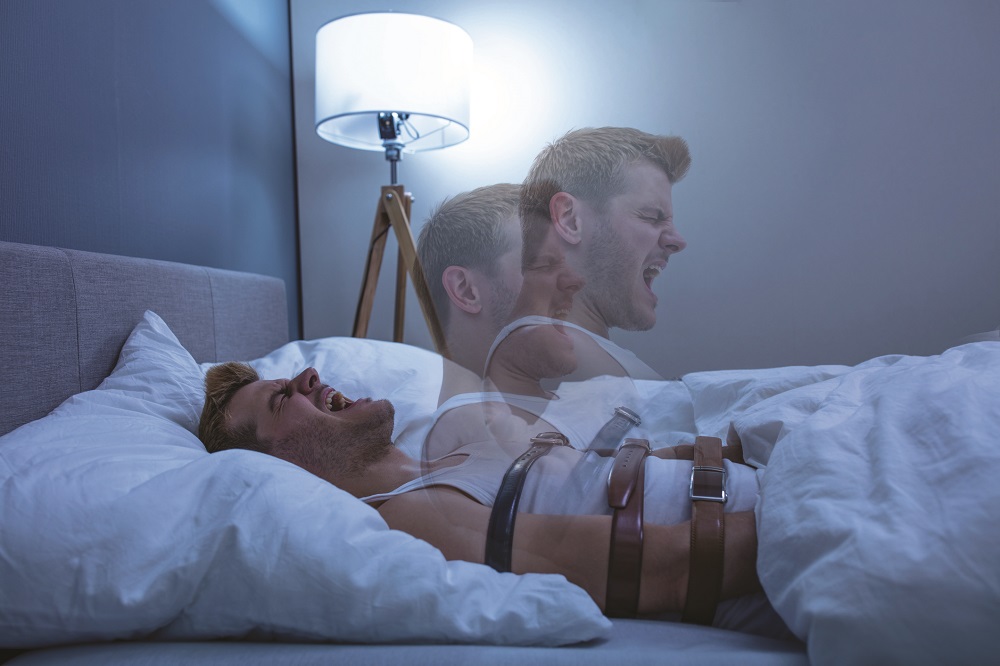You wake up in the middle of the night and realize that you can’t move. You’re frozen in place and feel a heavy weight upon you. Then you see a menacing figure sitting on your chest or approaching from across the room. There’s no question that you’re awake, but you’re helpless as fear and dread envelop you.
This experience has been striking people throughout history, and the menacing figures have been given many names around the world: demon, maere, alptraum, night hag, pisadeira. Fortunately, as real as the experience feels, nothing supernatural is happening. It’s just a strange and terrifying sleep disorder called sleep paralysis.
Bottom Line Health spoke with Brian Sharpless, PhD, a licensed clinical psychologist and sleep paralysis expert, and author, to learn more.
What’s happening
Sleep paralysis is a state between sleep and wakefulness. Even though you’re conscious, your body is still in REM-sleep-induced atonia (paralysis) and some remnants of REM-like brain activity persist. Electroencephalograms of people experiencing sleep paralysis show that their brains look both awake and asleep. The experience often occurs in stages: You wake up and realize you can’t move. Next, you may sense that something terrifying is in the room with you before you see whatever your imagination conjures up. The type of entity that people experience is influenced by time, place, and cultural norms. Some people feel the entity touching them, sitting on or choking them, or even sexually assaulting them. The whole episode lasts a few minutes.
Sleep paralysis can strike anyone, but it’s much more common in people with narcolepsy, some psychological disorders, or a history of trauma. It’s more likely to affect people with disrupted sleep and people who drink, use drugs, or take certain medications. There’s a genetic component as well: It’s associated with a mutation on the PER2 gene.
A brief history
Whatever the cause, being awake, paralyzed, and seeing shadowy figures is often terrifying for those who experience it—like something out of a horror movie. In fact, researchers suspect that more than a few folk monsters were born of this surprising common experience. The word nightmare itself originally referred to paralysis, feelings of chest pressure, intense fear, and the perception of being attacked.
Researchers believe that reported encounters with demons, ghosts, vampires, and, more recently, alien abductions may all have come from episodes of sleep paralysis. During the Salem witch trials, multiple “witches” were convicted after reports of nightly visitations to their neighbors.
Sharpless reports that despite the current scientific understanding of this strange experience, about 7 percent of people firmly believe their experiences are supernatural. If you’re in doubt, check out his rebuttal to this belief in his book, Monsters on the Couch. In the meantime, see the sidebar for some practical tips on how to prevent or reduce these spooky experiences.
How to Reduce Episodes
- Sleep on your side.
- Establish a regular sleep schedule. Aim for seven to nine hours of sleep.
- Try to reduce stress.
- Manage other health conditions, such as obstructive sleep apnea.
- Avoid alcohol and caffeine
before bed. - If you have an episode, focus on moving one part of your body, like a finger, to wake up faster.
- Treatment options include psychotherapy (e.g., cognitive-behavior therapy for isolated sleep paralysis developed by Dr. Sharpless or a meditation-based approach), use of certain antidepressants, and tools to train you to sleep on your side.


